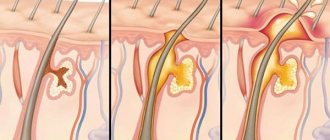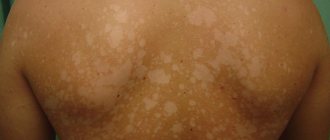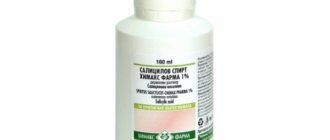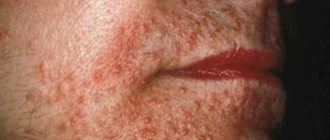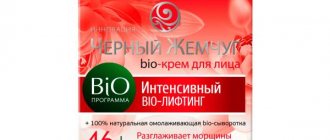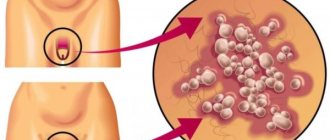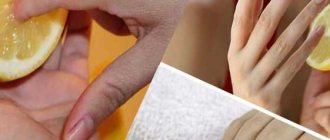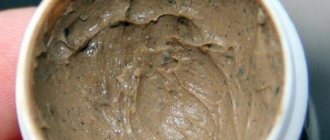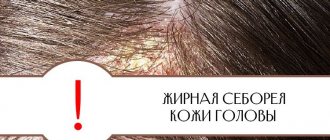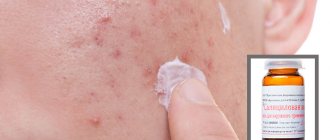Humanity became acquainted with lichen in ancient times. But to this day, lichens continue to find new victims, affecting the skin, causing people suffering and aesthetic discomfort. The pityriasis form of this unpleasant disease is provoked by a yeast-like fungus. Although the person does not experience any painful sensations, treatment cannot be delayed. The main and most effective drug for combating mycoses is pityriasis versicolor ointment. But it is very important to know how to make the right choice so that the treatment is effective, fast and safe.
Symptoms of pityriasis versicolor
How to recognize lichen versicolor and distinguish it from other types of lichen? Often, the symptoms of pityriasis versicolor can be confused with similar signs of other dermatological problems. It can be mistaken for vitiligo, lichen Zhibert, or syphilitic roseola. Therefore, to establish a diagnosis, it is necessary to seek advice from a specialist.
First of all, its characteristic symptom is the formation of multi-colored spots (pink, yellowish and brown) on the skin. They are localized mainly in the mouths of the hair follicles, and as they grow, they merge with each other, increasing the area of the affected skin. After some time, the color of the spots changes, darkens and becomes brown or light brown. It is these color changes that give the disease its name.
Lichen spots do not protrude above the skin and most often do not cause discomfort. Only sometimes mild itching is noted among the symptoms. In this case, the surface of the stains peels off easily when scraped.
The location of the spots of pityriasis versicolor usually does not have any symmetry. Most often they appear on the back, chest, scalp, neck, lower abdomen, sides and shoulders.
It is noteworthy that in children the disease is characterized by a significant area of distribution. Ringworm affects the skin of the armpits, legs, abdomen, back and is very difficult to treat, not going away for months or even years. Relapses of the disease are also possible, even after complete cure of all clinical manifestations.
- Symptoms of pityriasis versicolor in a spotty-flaky form.
The following symptoms of pityriasis versicolor in a spotty-flaky form are distinguished:
- Pink spots. Yellow-pink spots appear at the mouth of the hair follicle. They begin to increase in size, gradually merging with each other. As the disease progresses, the spots grow and expand. The favorite place for spots to appear is the skin of the abdomen, chest, neck, and scalp.
- Over time, the spots change color, becoming first red, then brown, and then brown.
- Often the surface of the stains peels off slightly, this is especially noticeable if you lightly scrape it. The peeling of pityriasis versicolor is called the chipping symptom. It occurs due to the fact that the fungus, in the process of its life activity, loosens the stratum corneum of the skin.
- In most cases there is no itching with pityriasis versicolor. It occurs extremely rarely and will not cause significant discomfort to a person.
- The skin on which lichen spots were previously located becomes resistant to tanning. It looks much lighter than healthy tissue. The impossibility of tanning is explained by the fact that as a result of the vital activity of the fungus, the functioning of melanocytes is disrupted. A similar phenomenon in medicine is called pvsedoleukoderma.
- Sometimes hair loss occurs in the area where pityriasis versicolor appears.
- Symptoms of the follicular form of pityriasis versicolor. This form of the disease is less common and is characterized by the appearance of papules that do not exceed 0.1 cm in diameter. Most often, papules cover the skin of the back, legs and arms, as well as the chest. The follicular form of pityriasis versicolor is characterized by itching.
- Symptoms of the inverted form of pityriasis versicolor. Skin folds are affected. In these places, the surface of the dermis turns red, begins to peel off, and minor itching may occur.
Regardless of the form of tinea versicolor, the disease has a tendency to periodic relapses and can haunt a person for many years.
Ointment as part of a comprehensive treatment
Treatment is prescribed comprehensively, it includes external agents, preparations for internal use, folk recipes and hygiene recommendations. But the main role is still given to antifungal drugs applied directly to the area affected by lichen. Shampoos, sprays, solutions and lotions with antifungal components are used. But almost always preference is given to soft dosage forms - ointments, gels and creams. They are the basis of therapy for all types of lichen.
Pityriasis versicolor should be treated with keratolytic and antifungal ointments. The former quickly soften the surface layer of the skin, promote exfoliation and rejection of the stratum corneum attacked by a fungal infection. The second are intended to destroy the pathogen.
The ointments also contain wound-healing substances, thanks to which the spots quickly dry out and heal. Sometimes these drugs include antibacterial components. Unadvanced forms of the disease are often cured only by external means, since the fungus cannot penetrate deep into the epidermis, which means it is not difficult to get rid of it. Ointments have another advantage - they are almost not absorbed into the blood.
Causes of pityriasis versicolor
The causative agents of pityriasis versicolor are the fungi Pityrosporum orbiculare and Malassezia furfur. There are versions that the development of the disease is largely determined by the chemical composition of sweat, individual predisposition of the skin, pathologies of the stratum corneum of the epidermis, especially physiological peeling. Excessive sweating can also contribute to the onset of the disease. Also, some doctors suggest that people with pulmonary tuberculosis are more likely to develop lichen versicolor.
Most often, lichen versicolor affects young people, both men and women equally, but it also affects children with weak immunity, suffering from diabetes, and vegetative neurosis. A separate risk group consists of adolescents who experience increased sweating during puberty.
Solar radiation, ionizing radiation, heavy metals, wearing clothes made of synthetic fabrics, diabetes mellitus and other diseases of the endocrine system also increase the likelihood of developing lichen versicolor.
Most people believe that tinea versicolor occurs due to internal problems in the functioning of the body. Modern dermatologists insist that this disease can be transmitted from one person to another. Therefore, pityriasis versicolor is classified as a conditionally pathogenic disease. After infection with a fungus, not every person begins to develop dermatological disorders.
It has been established that most of humanity is a carrier of a fungus that can cause pityriasis versicolor, but the progression of the disease is typical for people with impaired immune function.
In this regard, infection can occur in the following situations:
- With frequent close contacts, which are typical for family relationships;
- When using personal hygiene items or things that the patient used (washcloth, outerwear, towel, etc.);
- When visiting public locker rooms, fitting rooms.
The fungus can remain dormant on the skin for a long time. Its incubation period lasts from two weeks to several months. During this time, the person does not even suspect that he is a carrier of an opportunistic microorganism. The transition to the active phase of reproduction with characteristic clinical manifestations will occur when conditions are suitable for this.
Therefore, the causes of pityriasis versicolor in humans may be as follows:
- The presence of a predisposition of a particular person’s skin to the development of dermatomycosis.
- Increased work of the sebaceous glands, disruptions in the natural physiological processes occurring in the upper stratum corneum of the epidermis.
- Hyperhidrosis, leading to disturbances in the chemical composition of sweat. This creates favorable conditions for the proliferation of mycotic microorganisms.
- Chronic diseases, for example, diabetes, endocrine pathologies. Obesity and vegetative neurosis have a negative effect on the condition of the skin.
- Infections that affect the reduction of the body's immune forces. Of particular danger in this regard are caries, chronic tonsillitis, and pyelonephritis.
- Patients with tuberculosis are more susceptible to dermatomycosis than other people, and, in particular, pityriasis versicolor. Therefore, when detecting this pathology, the doctor must make sure that the patient does not only have a pulmonary form of tuberculosis, but also exclude tuberculosis of the kidneys, bones, etc. It is known that these infections often have a latent course and can be expressed in dermatomycosis.
- Diseases of the digestive organs, pancreas and liver have a negative impact on the condition of the skin and hair.
- Vegetative-vascular dystonia can also cause the development of pityriasis versicolor. In this case, the patient may note such health problems as dizziness, frequent depression, panic attacks.
- Diseases of the pulmonary system. Pneumonia, bronchitis, and bronchial asthma have a negative effect on the skin condition.
- Before the age of 7 years, pityriasis versicolor is almost never diagnosed. Isolated cases of the development of this dermatomycosis in children can be explained either by a sharp decrease in immune forces, or by the presence of a serious illness in the child.
- Women suffering from pityriasis versicolor should be checked for pathologies of the ovaries and adrenal glands. It is possible to develop dermatomycosis during pregnancy and during menopause.
- Frequent use of shower gels that have an antibacterial effect has a negative effect on the condition of the skin. The same applies to soap and other products used for personal hygiene.
- Stressful effects on the skin should be avoided, for example, visiting a solarium, excessive tanning, and exposure to solar radiation.
There is a theory that pityriasis versicolor may be a genetic disease. However, most scientists are of the opinion that close relatives are prone to disturbances in the functioning of the immune system. This, in turn, leads to the development of various fungal skin infections.
Homeopathy and herbal medicine
Homeopathic and herbal treatment methods will help to overcome the disease quickly due to their complex action aimed at:
- elimination of rash,
- relieving the patient of itching,
- improvement of general well-being,
- increased blood circulation,
- normalization of metabolic processes,
- neutralizing the action of the fungus.
Herbal medicine is an ancient and proven way to combat pityriasis versicolor (tinea versicolor). It involves a large number of methods based on the use of ointments.
- Oxalum ointment. It is made on the basis of a mixture consisting of sour cream, cream and sorrel gruel. The duration of treatment is at least 10 days.
- St. John's wort ointment. It is necessary to prepare a fat base in the form of Vaseline and butter. Dry herbs in crushed form are added to it. A gruel based on fresh plants can also be used. The mixing process produces an ointment that is used to lubricate the area of the disease.
- You can also use ointments made according to a similar scheme, based on calendula, hellebore, string, celandine and other plants that have noticeable antiseptic effects.
The compounds relieve unpleasant symptoms and facilitate recovery.
Diagnosis of pityriasis versicolor
Diagnosis of pityriasis versicolor occurs in the office of a dermatologist. The doctor examines and performs dermatoscopy of the skin that has a changed color.
To confirm the diagnosis, the doctor performs a Balzer test using iodine. The essence of the method is that an alcohol solution of iodine in a 5% concentration is applied to the skin. Due to the increased looseness of the areas damaged by the fungus, increased absorption of the solution occurs and their color becomes more intense. Fucarcin and brilliant green in the form of solutions can be used for the same purpose.
It is also necessary to confirm Beignet's symptom, which consists of peeling of the skin after light scraping. This symptom is also called the chip phenomenon.
An auxiliary diagnostic method is luminescence testing. To do this, the patient is taken into a darkened room, where, in the light of special lamps, the affected areas of the skin acquire a dark brown or red-yellow tint.
During a microscopic examination of the scraping, elements of the fungus characteristic of pityriasis versicolor will be identified in the scales of the epidermis.
To exclude the possibility that skin problems are not caused by syphilitic manifestations, which are similar to the symptoms of pityriasis versicolor, the doctor may refer the patient for a PCR diagnosis or an RPR test.
Contraindications and restrictions
Before you start using remedies for ringworm, you need to make sure that the person does not have any contraindications or restrictions on taking the medications. These may include the following clinical conditions:
- background chronic diseases,
- serious liver pathologies,
- kidney diseases of various forms and types,
- children up to 12 years of age (and sometimes up to 16),
- pregnancy,
- breastfeeding a baby,
- individual intolerance to components,
- the likelihood of developing an allergic reaction.
Answers to popular questions:
- Can I take a shower/bath if I have pityriasis versicolor? Yes, if the diagnosis of pityriasis versicolor is confirmed, you can take a bath and shower without fear.
- Is it possible to go to the sea and sunbathe if I have pityriasis versicolor? Yes, you can go to the sea and sunbathe if you have pityriasis versicolor. Exposing the surface of affected skin to ultraviolet rays may not result in a faster recovery, but it also does not make the situation worse. However, you should take into account the fact that the affected areas will not tan, and therefore will become more visible against the background of tanned healthy skin. In addition, excessive sun exposure increases the risk of developing skin cancer.
- What should I do if I get pityriasis versicolor during pregnancy? Modern medicine does not have any data regarding the effect of the disease on the course of pregnancy or on the fetus itself. Therefore, if pityriasis versicolor manifested itself during pregnancy, you should address this problem to your gynecologist and follow his recommendations regarding the treatment of dermatomycosis.
- Do pityriasis versicolor spots itch? Mild itching may occur in the affected areas.
- Is pityriasis versicolor dangerous? What consequences and complications can it provoke? The disease is not dangerous; the spots it leaves on the skin disappear a few months after recovery.
- Is it possible to lubricate pityriasis versicolor spots with vinegar or boric acid? There is no scientific evidence regarding the effectiveness of treating pityriasis versicolor with boric or acetic acid. Therefore, it is not advisable to recommend this method of therapy.
- Can pityriasis versicolor develop again? Is this a chronic disease? Relapse of the disease occurs with a high probability in people after finishing therapy over the next 1-1 years. If there is a skin predisposition to dermatomycosis, then pityriasis versicolor can become chronic and worsen from time to time. To reduce the number of relapses of the disease, the doctor may recommend taking antimycotics for prophylactic purposes.
Efficacy of drugs
Provided that ointments intended for the treatment of pityriasis versicolor are used correctly, the products will be able to cope with the fungal infection and help prevent re-infection. The treatment process takes a lot of time, so the main thing is to finish what you start.
Important!
Antifungal drugs are highly toxic to pathogenic fungal flora and to the human body. For this reason, it is necessary to strictly follow the instructions for use so as not to harm your health.
Application diagram
Antifungal therapy with external drugs follows the general scheme. Patients must do a number of things:
Twice a day, areas affected by lichen should be treated with salicylic alcohol or another keratolytic agent.
For effective treatment, it is recommended to use several antifungal drugs with different active substances. Ointments are applied to the lichen one by one. The course of treatment should last four weeks. For example, it is recommended to use Fungoterbin and Mycozoral with Clotrimazole.
For large affected areas, you need to resort to complex therapy. It is recommended to supplement the use of creams and ointments with systemic medications.
After completing treatment, you need to take tests for control. The patient is considered recovered if the pathogen was not detected in three samples. In case of positive results, the course of treatment is repeated, only other antifungal drugs are used.
It is important to take therapy to its logical conclusion. It is unacceptable to stop using medications after symptoms disappear. This will help avoid relapses.
Particular attention should be paid to preventive measures. During hygiene procedures, shampoos with antifungal ingredients should be used.
The full therapeutic course lasts about two months. Full compliance with the treatment regimen will significantly speed up the recovery process.
Instructions for use
The rules for using certain products depend on their type and form of release.
- Pills. Almost all tablets for colored fungal infections have an identical dosage regimen. Take 1-2 capsules and take them twice or thrice a day after meals. Sometimes the compositions may be prescribed to be used with meals, which enhances the therapeutic effect.
- Solutions. They are best used in the form of lotions. To do this, take a piece of gauze commensurate with the affected area, drop the required amount of solution onto it, and apply it to the damaged skin area for several hours. Such lotions need to be changed 2-3 times a day, and the result will be felt in a few days.
- Ointments and creams. All ointments and creams have a similar principle of application. It is necessary to apply a small amount of medication to your finger, and then carefully distribute it over the area of redness and the area around the lesion. In a day you will see improvements: redness will begin to subside, discomfort will disappear.
Following the instructions will help not only to recover from the disease quickly and easily, but also to avoid unwanted effects when taking medications. It is best to contact a medical specialist who will prescribe the remedy in accordance with the clinical picture and symptoms.
Peculiarities of nutrition of patients
Pityriasis versicolor develops most often due to decreased immunity, disturbances in the composition of sweat and increased production of sweat secretions.
To prevent the development of these deviations, it is necessary to adjust the diet:
- the diet must be balanced, with sufficient vitamins and minerals. Good nutrition will strengthen the immune system;
- food should not overload the digestive tract. Portions are small in size, avoiding fatty and unhealthy foods. This will help you avoid gaining excess weight (it helps increase sweat production), and avoid the development of pathologies in the gastrointestinal tract (diseases increase the likelihood of decreased immunity);
- maintain a drinking diet. At least 2 liters of clean water per day;
- give preference to freshly prepared dishes;
- exclude sweets, flour products and alcohol from the menu.
If necessary, your diet can be discussed with a dermatologist. It is important to follow a diet without fail during exacerbation of pathology.
Prevention
Even after completing a course of treatment, impaired skin pigmentation will persist for 3 to 6 months. Since the disease is prone to frequent relapses, it is necessary to follow a number of preventive measures aimed at increasing the body's defenses. The best way to exercise is to take daily walks.
People in the risk category should pay increased attention to their health. If a person has previously suffered from pityriasis versicolor, then for preventive purposes he should periodically use antifungal drugs in the form of shampoos or shower gels. Avoid being in the heat, do not visit the solarium and try not to get nervous.
Regular walks can help prevent ringworm
